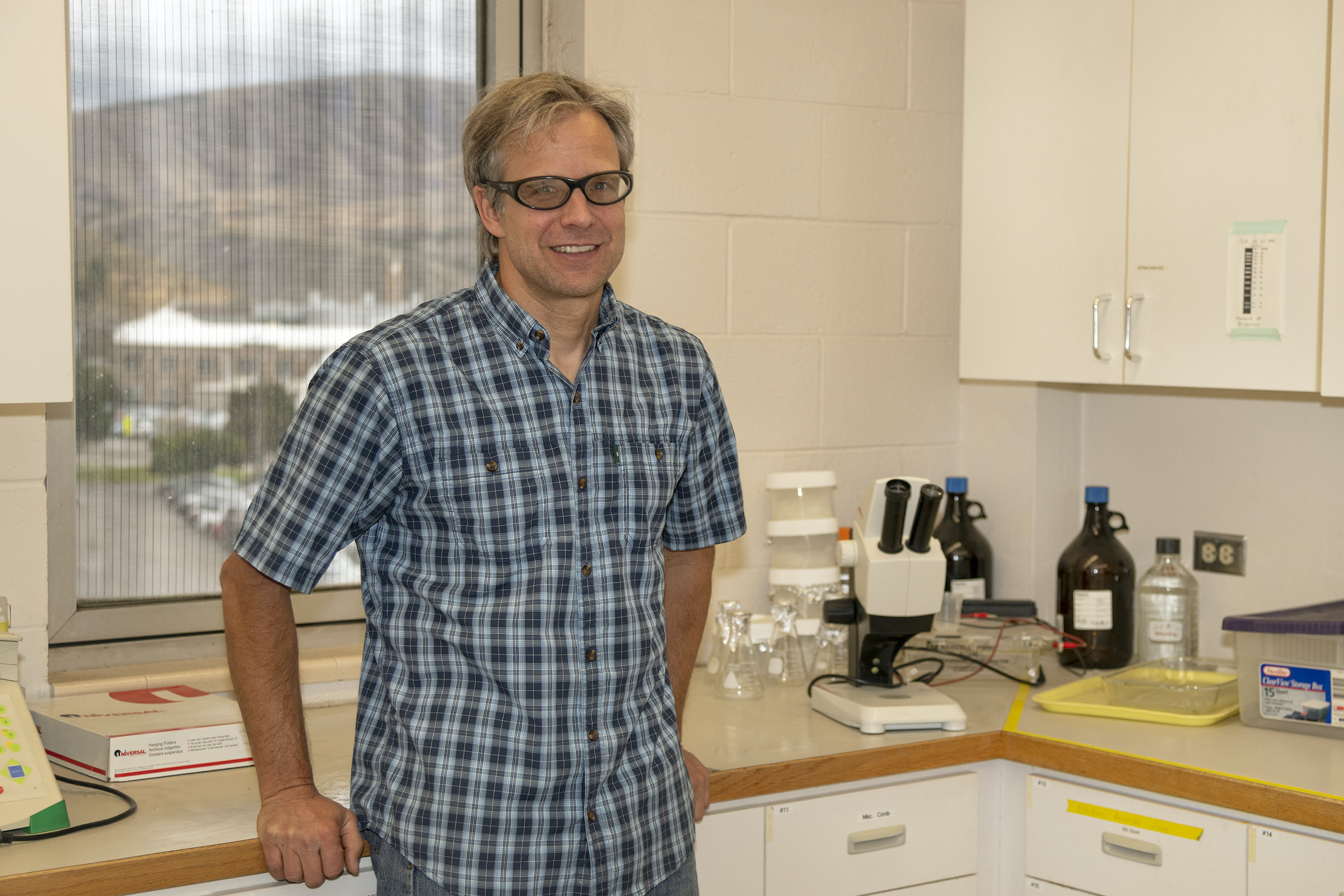ISU Professor Aho studies how airborne bacteria, fungi help it rain and snow
November 5, 2019

POCATELLO – Most people don’t think of weather as having a biological component and aren’t aware of the role airborne bacteria and fungi have in helping create rain and snow. But Ken Aho, Idaho State University associate professor of biological sciences, studies this phenomenon.
“Weather is not as simple as we think – it is not just air currents and low- and high-pressure systems. Organisms in the atmosphere may dictate, to a degree, when and where precipitation falls,” Aho said. “The atmosphere is full of ice-nucleating bacteria and other microbes that can trigger precipitation. Ski areas already use ice-nucleating organisms in snow making operations.”
Understanding airborne bacteria and fungi in precipitation may help scientists to better understand weather patterns, particularly precipitation levels.
Working with colleagues from the United States and Europe and funded by a National Science Foundation grant, Aho participated in a four-year study to study organisms floating in the air, some of which help form rain and ice. The researchers took samples from three locations in the United States, in Pocatello at ISU, in Baton Rouge, Louisiana at Louisiana State University and Virginia Tech in Blackford, Virginia. Some of the results of the research were recently published in the article “Spatiotemporal patterns of microbial composition and diversity in precipitation" in the journal Ecological Monographs.
“The grant that sponsored the research was focused on the fact that water doesn’t freeze at zero degrees Celsius (32 degrees Fahrenheit) like most people think,” Aho said. “It takes colder temperatures, in the absence of ice nucleation particles, for ice to form.”
He said certain particles are extremely efficient at causing ice to form at temperatures warmer than zero degrees Celsius, and the best natural ice nucleators in the world are bacterial organisms.
“Ice nucleating microbes help water freeze by serving as the nucleus (center) of an ice crystal,” Aho said. “When ice particles form in clouds, they can trigger precipitation. A lot of microbes do travel in clouds and the atmosphere. The objective of our project was to figure out what was up there and identify which organisms could nucleate ice. ”
The researchers collected rain samples in large bins in Idaho, Louisiana and Virginia then used genetic sequencing and molecular analysis tools to identify what was in the rain.
“One of the cool things about the paper is that bacteria and fungi appear to travel differently in the atmosphere,” Aho said. “Atmospheric fungi tend to stay fixed to particular spatial locations whereas bacteria vary seasonally across locations. Prior to our work, comparisons of atmospheric bacteria and fungi spatiotemporal (space and time) trends were very limited.
The title of the National Science Foundation grant that funded this research was Research on Airborne Ice Nucleating Species (RAINS).
Categories:
